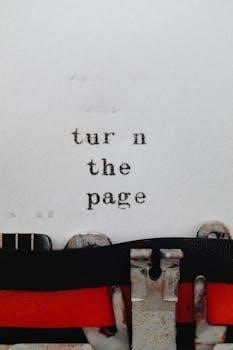Manual Lymphatic Drainage Courses⁚ A Comprehensive Guide
Manual Lymphatic Drainage (MLD) is a specialized massage technique designed to improve lymphatic flow. This guide explores MLD courses‚ certifications‚ and techniques for therapists and healthcare professionals seeking expertise.
Manual Lymphatic Drainage (MLD) is a gentle‚ non-invasive massage technique focused on stimulating the lymphatic system. The lymphatic system plays a crucial role in detoxification and immune function by transporting lymph fluid throughout the body. MLD uses rhythmic movements to encourage lymphatic flow‚ aiding in the elimination of toxins and reducing swelling. It’s often recommended post-liposuction to address edema. Proper MLD requires specialized training to understand lymphatic anatomy‚ physiology‚ and the specific techniques developed by pioneers like Dr. Emil Vodder. Courses provide in-depth knowledge and hands-on instruction for effective MLD practice.
Benefits of MLD

Manual Lymphatic Drainage (MLD) offers several benefits‚ including enhanced detoxification by clearing congested tissues and improving lymphatic vessel function. MLD reduces edema and swelling by rerouting fluid from congested areas. The technique also provides relaxation and analgesia. Many plastic surgeons recommend MLD post-liposuction. MLD can improve skin appearance by reducing fine lines and wrinkles. Proper lymphatic drainage is crucial for tissue nourishment and efficient processing of inflammation. MLD courses equip practitioners to administer MLD effectively‚ maximizing these therapeutic outcomes for their clients. These effects continue after treatment.
MLD Techniques and Methods

Manual Lymphatic Drainage (MLD) involves rhythmic movements to stimulate lymphatic flow‚ aiding in toxin elimination and swelling reduction. Techniques include gentle‚ non-invasive massage to improve skin appearance. Specialized methods guide fluid drainage with delicate suction. Lymphatic Drainage Therapy (LDT) is a significant contribution‚ while the Alatriste Method offers certification post-course completion. Practitioners learn sequences for edema and various body areas. MLD certification courses cover techniques developed by Dr. Emil Vodder‚ enhancing lymph formation. These courses educate on applying MLD to specific pathologies‚ ensuring therapists are well-versed in diverse MLD applications.
The Vodder Method
The Vodder Method is a manual lymphatic drainage technique developed by Dr. Emil Vodder. It involves specific hand movements to stimulate lymphatic flow. The Dr. Vodder School is a prominent training and certification body for this method. Certification includes in-depth study of lymphatic system physiology and pathophysiology. Courses cover the application of Vodder MLD strokes to different body parts. The Vodder technique is a key component of Complete Decongestive Therapy (CDT) for lymphedema. Therapists can achieve certification in Manual Lymph Drainage (Vodder Technique) through comprehensive courses. This method emphasizes a careful balance between lecture topics and hands-on practice.
Who Should Take an MLD Course?

MLD courses are beneficial for various healthcare professionals. Licensed massage therapists can expand their skill set with MLD techniques. Physical therapists‚ occupational therapists‚ and nurses can integrate MLD into their practice. Estheticians may use MLD for facial and body treatments. Those involved in oncology massage can utilize MLD for cancer-related lymphedema. The courses are also helpful for those seeking expertise in post-surgical lymphatic drainage. Individuals with a background in anatomy and physiology find these courses valuable. MLD certification can enhance career opportunities and improve patient outcomes. Completing a course and passing exams validates qualification in MLD.
Licensed Massage Therapists
Licensed Massage Therapists (LMTs) looking to expand their skill set can greatly benefit from MLD courses. Adding MLD techniques enhances their ability to address various client needs‚ including edema reduction and detoxification. MLD certification provides LMTs with a specialized skill‚ making them more competitive. Courses offer in-depth knowledge of lymphatic system anatomy and physiology. LMTs can integrate MLD into existing massage practices for improved client outcomes. The Vodder method and other techniques provide additional tools for therapeutic massage. Certification validates expertise and increases credibility. MLD training enhances the therapist’s ability to promote overall wellness and address specific health concerns.
Other Healthcare Professionals
Besides massage therapists‚ various healthcare professionals‚ including nurses‚ physical therapists‚ and occupational therapists‚ can benefit from MLD training. Integrating MLD into their practice enhances their ability to manage conditions like lymphedema and post-surgical swelling. MLD certification provides additional expertise for patient care. Healthcare providers learn techniques to improve lymphatic flow and reduce tissue congestion. Understanding the lymphatic system’s role in health and disease is crucial. MLD courses equip professionals with skills to address specific patient needs. These skills include pre- and post-cancer treatment support. MLD knowledge complements existing treatment protocols for holistic patient care. It improves patient outcomes and enhances professional credibility.
MLD Certification Requirements and Options
MLD certification varies depending on the training institution and method. Common certifications include Certified Manual Lymphatic Drainage Therapist (CMLDT)‚ Vodder Method Certification‚ and Complete Lymphedema Certification. CMLDT typically requires a minimum of 40 hours of classroom instruction. Vodder Method certification focuses on techniques developed by Dr. Emil Vodder. Complete Lymphedema Certification involves more extensive training‚ often around 135 hours. Prerequisites may include being a licensed healthcare professional. Certification validates expertise in MLD techniques and lymphatic system knowledge. Successful completion of written and practical exams is generally required. Certification enhances professional credibility and demonstrates competence in providing effective MLD therapy. Choose a certification that aligns with your professional goals.
Certified Manual Lymphatic Drainage Therapist (CMLDT)
The Certified Manual Lymphatic Drainage Therapist (CMLDT) certification is a widely recognized credential in the field of lymphatic drainage therapy. Typically‚ CMLDT certification requires a minimum of 40 hours of comprehensive classroom instruction‚ emphasizing both theoretical knowledge and hands-on practical skills. The curriculum covers lymphatic system anatomy‚ physiology‚ indications‚ and contraindications for MLD. Students learn various MLD techniques applicable to different body areas. Upon completing the course and passing both written and practical exams‚ participants receive certification. This validates their expertise in performing MLD effectively. CMLDT certification enhances professional credibility‚ ensuring therapists possess the necessary skills to provide safe and beneficial lymphatic drainage therapy.
Vodder Method Certification
Vodder Method Certification represents specialized training in the original manual lymphatic drainage techniques developed by Dr. Emil Vodder. This certification involves in-depth study of the Vodder technique’s specific strokes and sequences‚ applied to various body parts including the neck‚ face‚ arms‚ legs‚ and abdomen. Courses emphasize the physiological effects of MLD‚ focusing on enhancing lymph formation and drainage within superficial and deep lymphatic systems. Certification typically requires completing a multi-day classroom course with hands-on practice. Participants learn to address specific pathologies through MLD‚ gaining expertise in its therapeutic applications. The Vodder Method Certification is highly regarded‚ ensuring practitioners uphold the standards of Dr. Vodder’s original techniques.
Complete Lymphedema Certification

Complete Lymphedema Certification provides extensive training in managing lymphedema through manual lymphatic drainage (MLD) and complete decongestive therapy (CDT). This certification typically involves a 135-hour course‚ covering lymphatic system anatomy‚ physiology‚ and the application of MLD techniques for various body areas. Students learn to perform MLD using the Vodder technique‚ addressing lymphatic flow and reducing swelling. The curriculum includes bandaging techniques‚ skin care‚ and exercises to manage lymphedema effectively. Graduates are qualified as Certified Lymphedema Therapists (CLT)‚ equipped with the expertise to develop comprehensive treatment plans for lymphedema patients. This certification ensures a high level of competence in lymphedema management.
Key Components of an MLD Course Curriculum
An MLD course curriculum typically encompasses several essential components to ensure comprehensive training. Firstly‚ it covers the detailed anatomy and physiology of the lymphatic system. Secondly‚ it includes a thorough understanding of indications and contraindications for MLD‚ ensuring safe and effective application. Thirdly‚ the curriculum provides in-depth training in MLD techniques for different body areas‚ including the neck‚ face‚ arms‚ legs‚ and abdomen. Furthermore‚ students learn to create optimal environments for MLD‚ recognizing specific pathologies and tailoring treatments accordingly. Practical‚ hands-on instruction is a critical element‚ allowing students to develop proficiency in performing MLD. Finally‚ the course integrates knowledge of lymphatic drainage and its impact on various conditions.
Lymphatic System Anatomy and Physiology
A comprehensive understanding of lymphatic system anatomy and physiology is fundamental to effective MLD practice. The curriculum delves into the lymphatic vessels’ network‚ lymph nodes‚ and organs like the spleen and thymus. The course explains how lymphatic fluid is formed‚ its composition‚ and its role in immune function. Students learn about the lymphatic system’s crucial role in fluid balance‚ waste removal‚ and immune response. The pathways through which lymph travels and drains back into the circulatory system are also covered in detail. Furthermore‚ the curriculum explores the implications of lymphatic dysfunction‚ setting the stage for understanding how MLD can restore optimal function.
Indications and Contraindications
An MLD course curriculum emphasizes understanding the specific indications and contraindications for manual lymphatic drainage. This includes recognizing conditions where MLD is beneficial‚ such as lymphedema‚ post-surgical swelling‚ and certain inflammatory conditions. Students learn to identify situations where MLD should be avoided or modified‚ such as acute infections‚ active cancer‚ or severe heart conditions. The course also covers how to assess patients to determine their suitability for MLD‚ including taking a thorough medical history and performing relevant physical examinations. Emphasis is placed on making informed decisions to ensure patient safety and maximize the therapeutic benefits of MLD.
MLD Techniques for Different Body Areas
A key component of MLD courses is learning specific techniques tailored for different body areas. This encompasses mastering precise hand movements and pressure adjustments for the face‚ neck‚ arms‚ legs‚ abdomen‚ and chest. Students are taught how to adapt their approach to address localized edema‚ inflammation‚ or post-surgical swelling in each region. The curriculum covers anatomical considerations for lymphatic pathways in each area‚ ensuring effective drainage. Practical exercises and supervised practice allow students to refine their skills and develop confidence in applying MLD techniques appropriately across the entire body. Special attention is given to adapting MLD for various patient needs.
Post-Lipo MLD
Post-lipo MLD is a specialized application of manual lymphatic drainage‚ often recommended by plastic surgeons to aid recovery after liposuction. MLD helps to reduce swelling‚ minimize fibrosis‚ and improve skin appearance by stimulating lymphatic flow and eliminating toxins. MLD courses focusing on post-lipo techniques equip therapists with the skills to address specific complications and promote optimal healing. These courses cover the appropriate timing‚ pressure‚ and movements to use after surgery. Students learn to identify and manage seromas‚ reduce inflammation‚ and improve overall patient outcomes‚ contributing to enhanced aesthetic results and patient satisfaction. It plays a vital role in post-operative care.
Finding Reputable MLD Courses and Instructors
Finding reputable MLD courses and instructors requires careful consideration of several factors to ensure quality training. Verify instructors’ credentials‚ certifications (like CMLDT or Vodder)‚ and affiliations with professional lymphatic organizations. Look for courses with comprehensive curricula‚ covering anatomy‚ physiology‚ and hands-on techniques. Check reviews and testimonials from past students to assess the course’s effectiveness. Ensure the course provides sufficient practical experience and mentorship. A reputable course should also offer certification upon completion‚ validating your expertise. Seek instructors with extensive experience and a strong reputation in the field. Consider schools recommended by respected professional associations. Proper training is essential for effective and safe MLD practice.
MLD in Oncology Massage
Manual Lymphatic Drainage (MLD) plays a crucial role in oncology massage by addressing lymphedema‚ a common side effect of cancer treatment. MLD helps manage swelling and discomfort by gently stimulating lymphatic flow in affected areas. Therapists trained in oncology massage use modified MLD techniques to accommodate the specific needs and sensitivities of cancer patients. This includes understanding contraindications and adapting pressure and movements. Certification in MLD and specialized training in oncology massage are essential for providing safe and effective treatment. MLD can improve patients’ quality of life by reducing edema‚ improving circulation‚ and promoting relaxation. It’s a valuable tool for supporting cancer patients throughout their treatment and recovery.
Home Care and Self-Massage Techniques
Manual Lymphatic Drainage (MLD) benefits extend beyond professional sessions with effective home care and self-massage techniques. Patients can learn simple MLD routines to maintain lymphatic flow and reduce swelling between treatments. These techniques typically involve gentle‚ rhythmic movements following the lymphatic pathways. Instruction on proper hand placement and pressure is crucial to avoid injury and maximize effectiveness. MLD courses often include modules on self-care‚ empowering individuals to manage their symptoms and improve overall well-being. Regular self-massage can support the lymphatic system‚ reduce fluid retention‚ and promote relaxation. Consistent practice enhances the benefits of professional MLD therapy.

No Responses